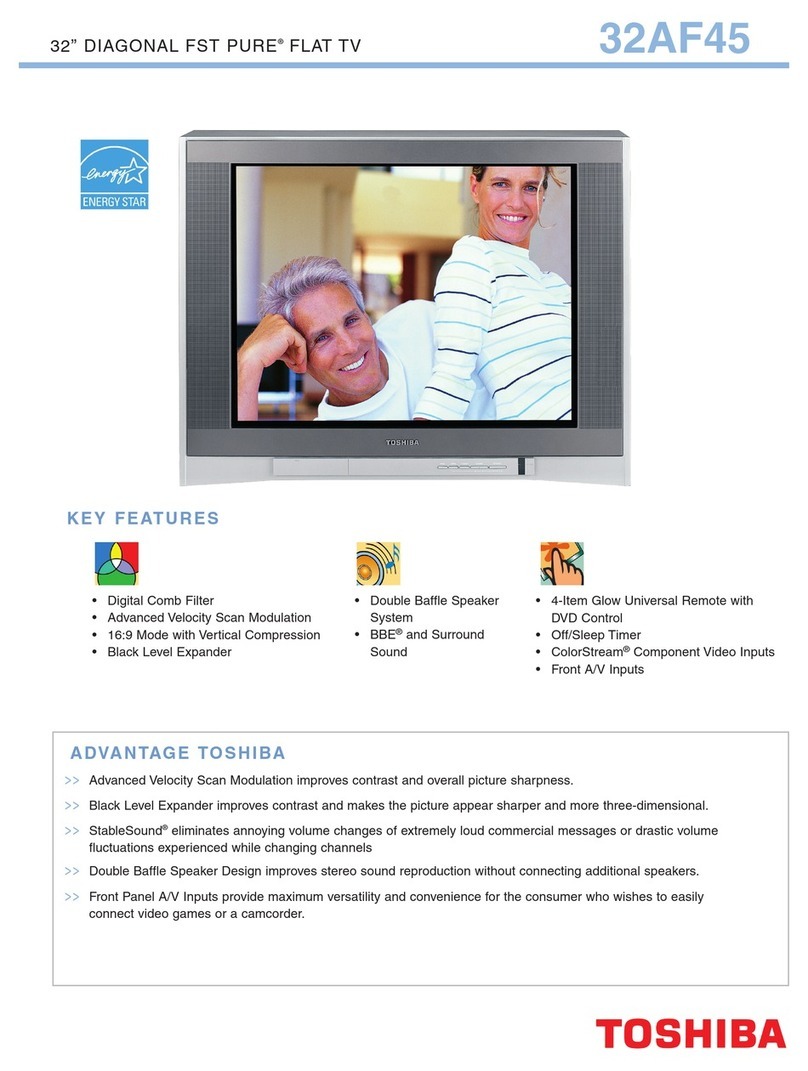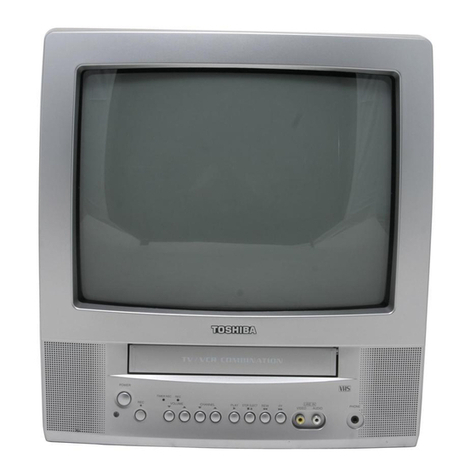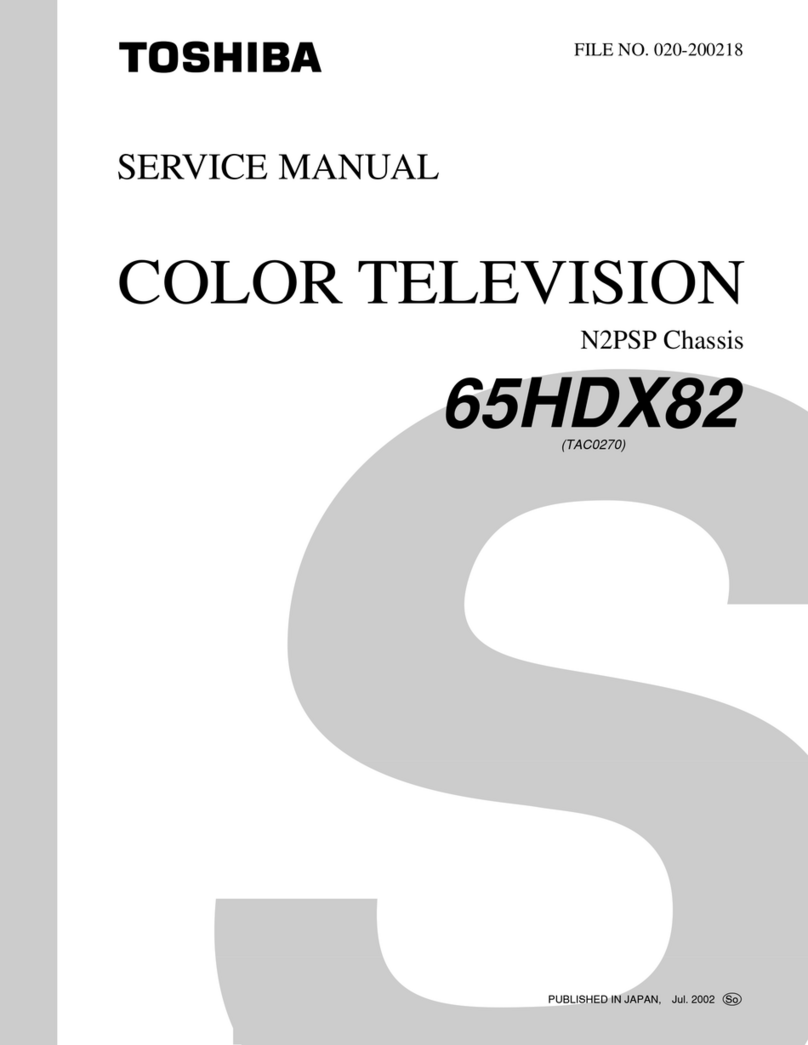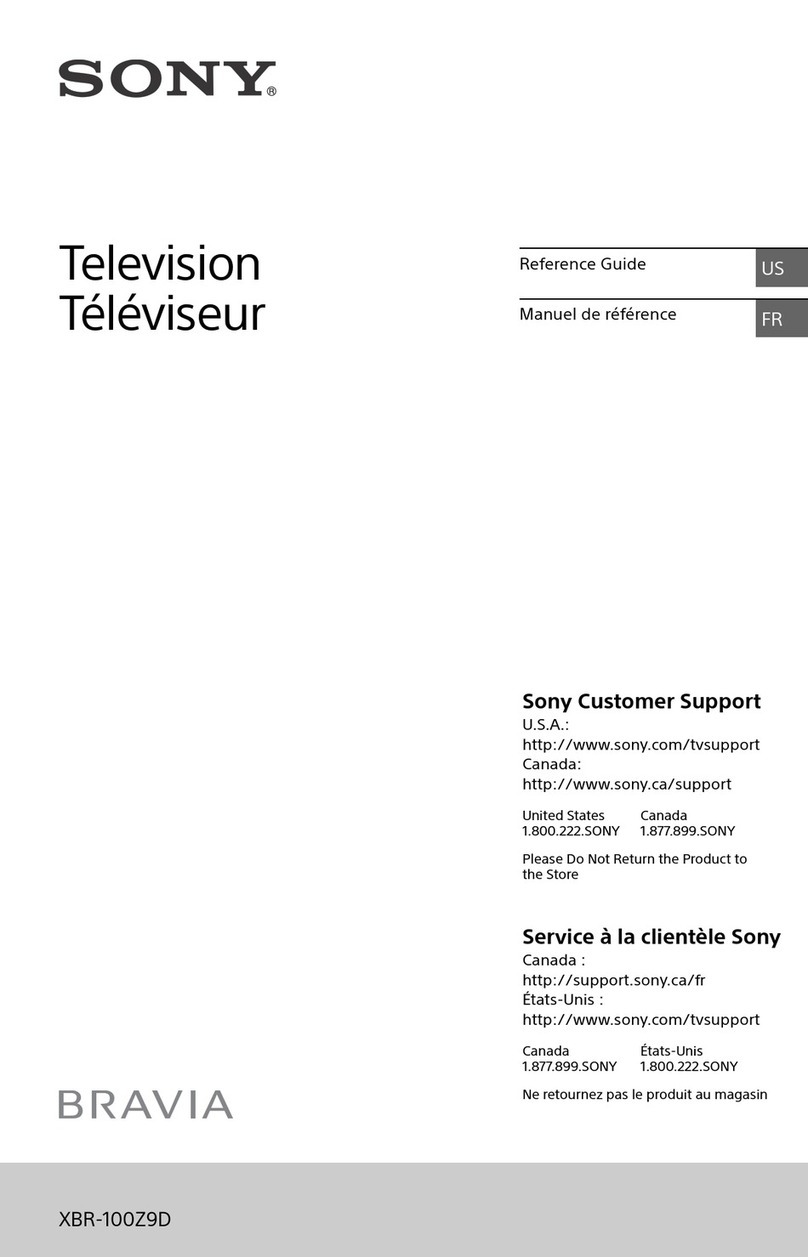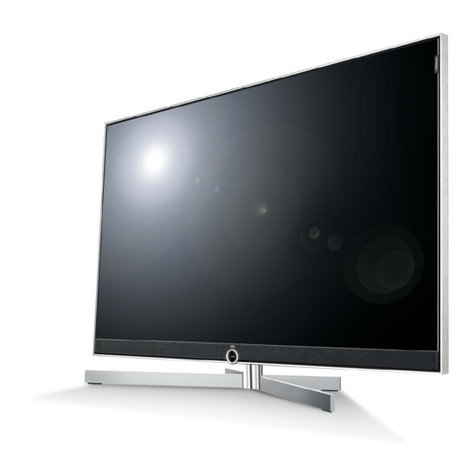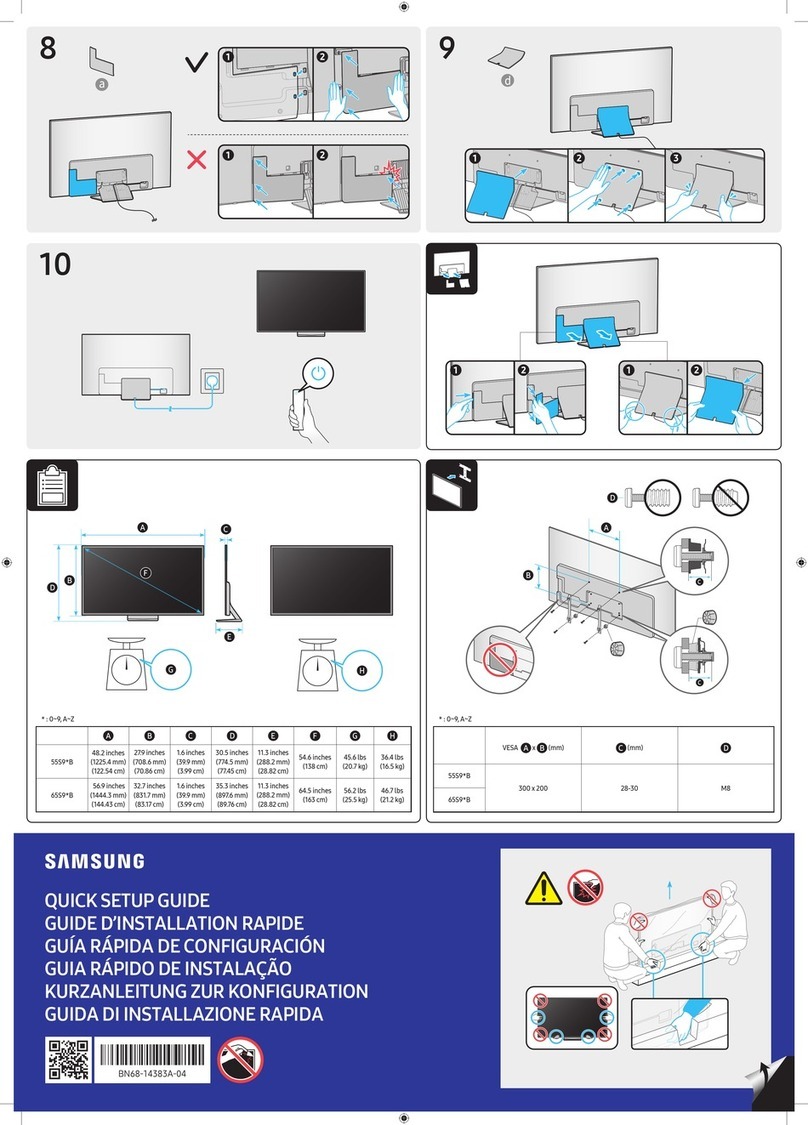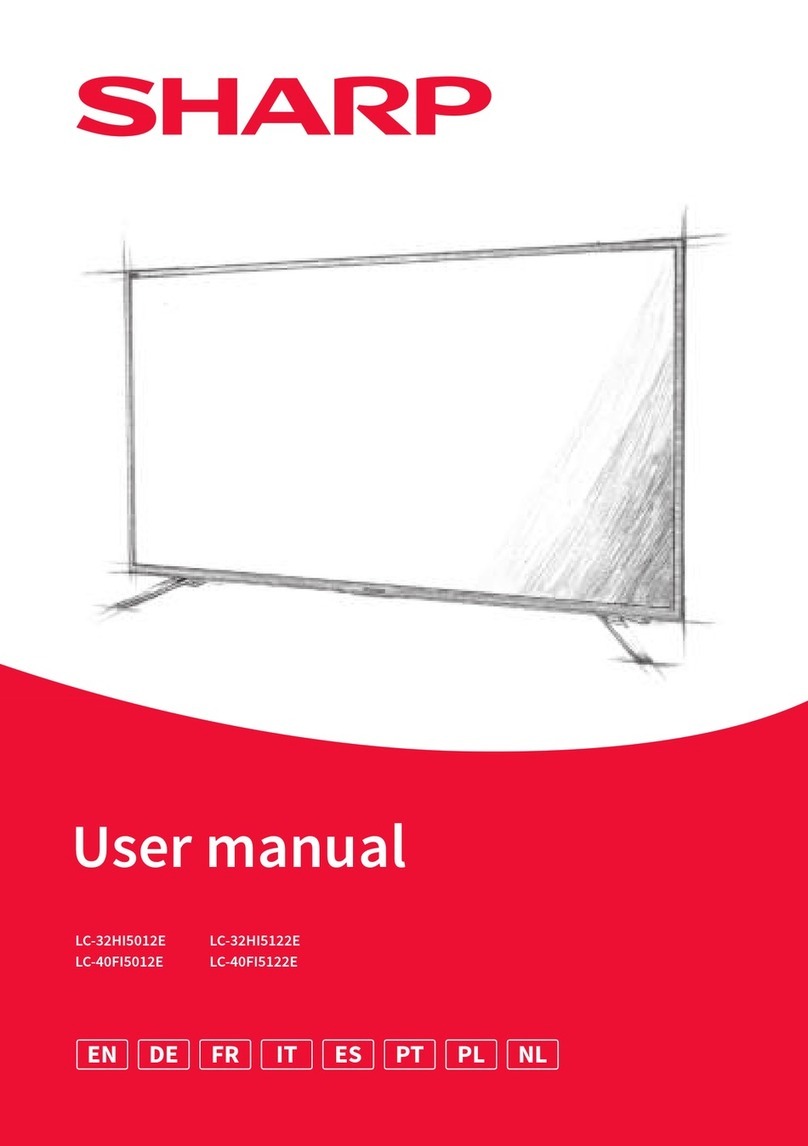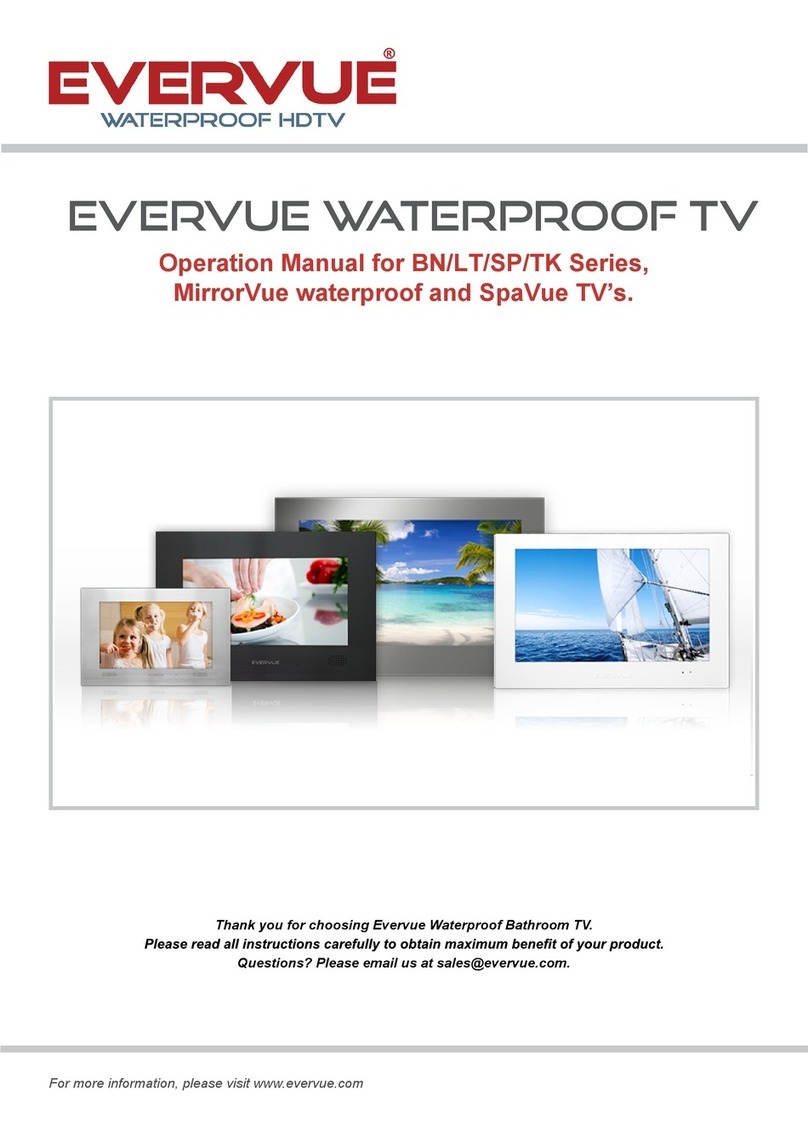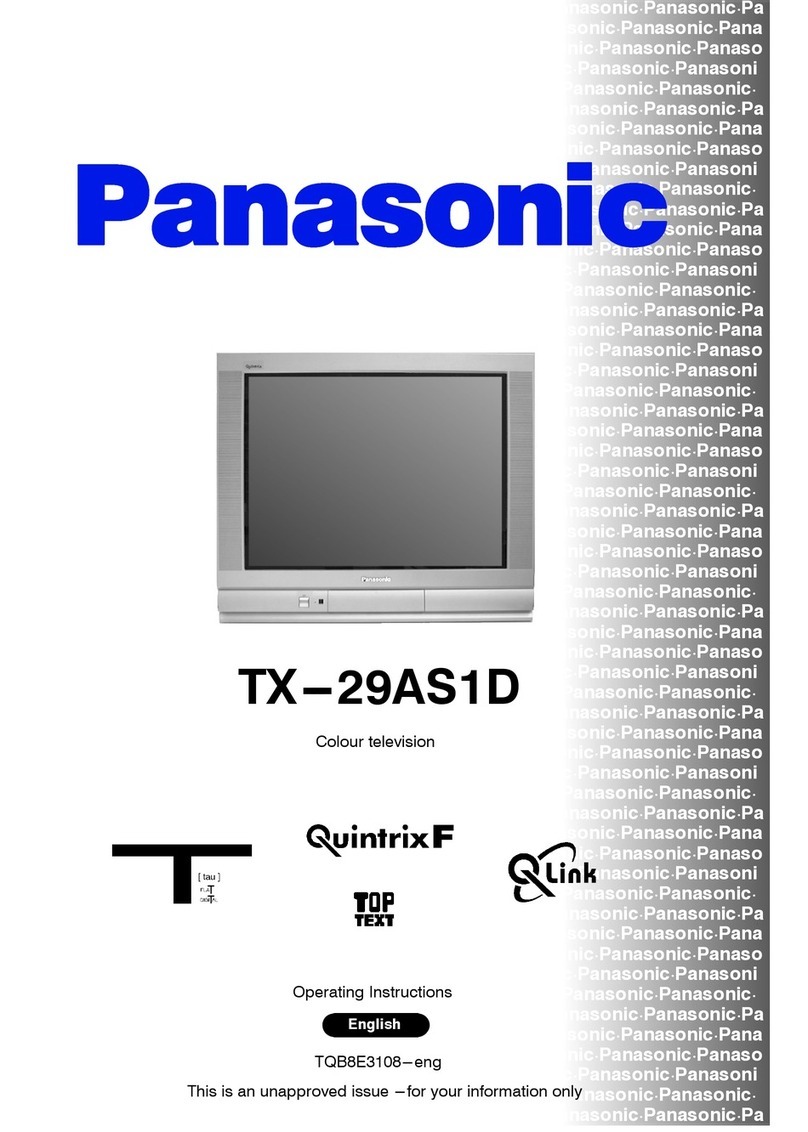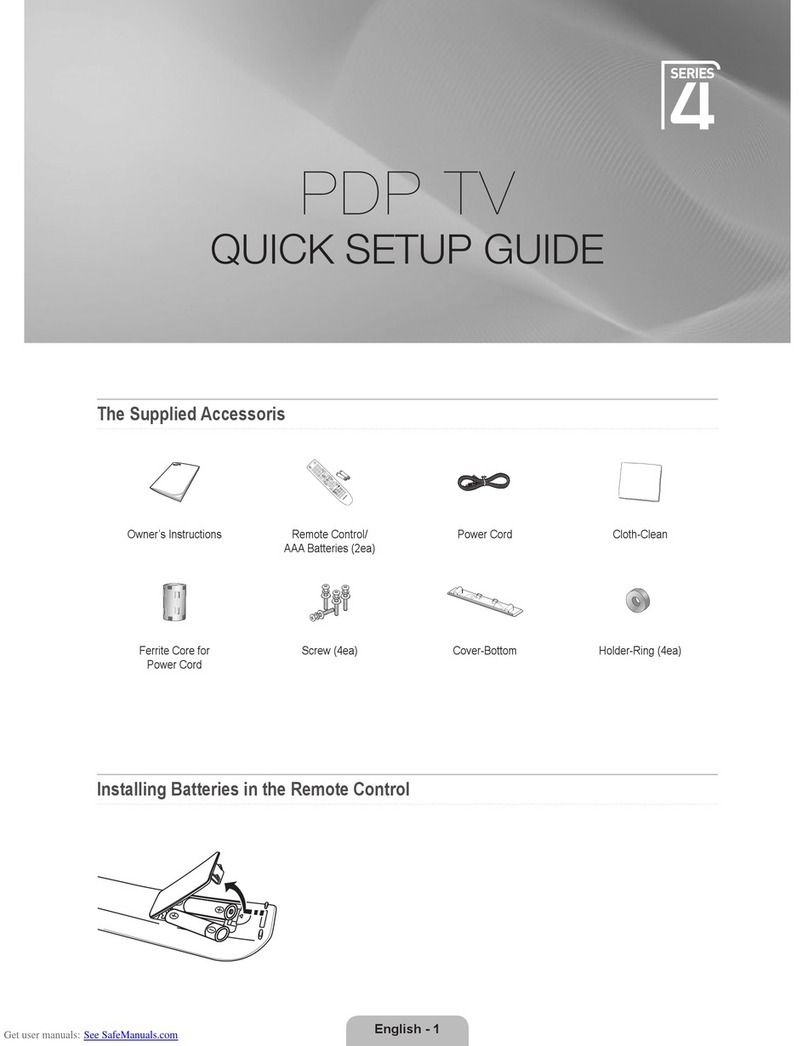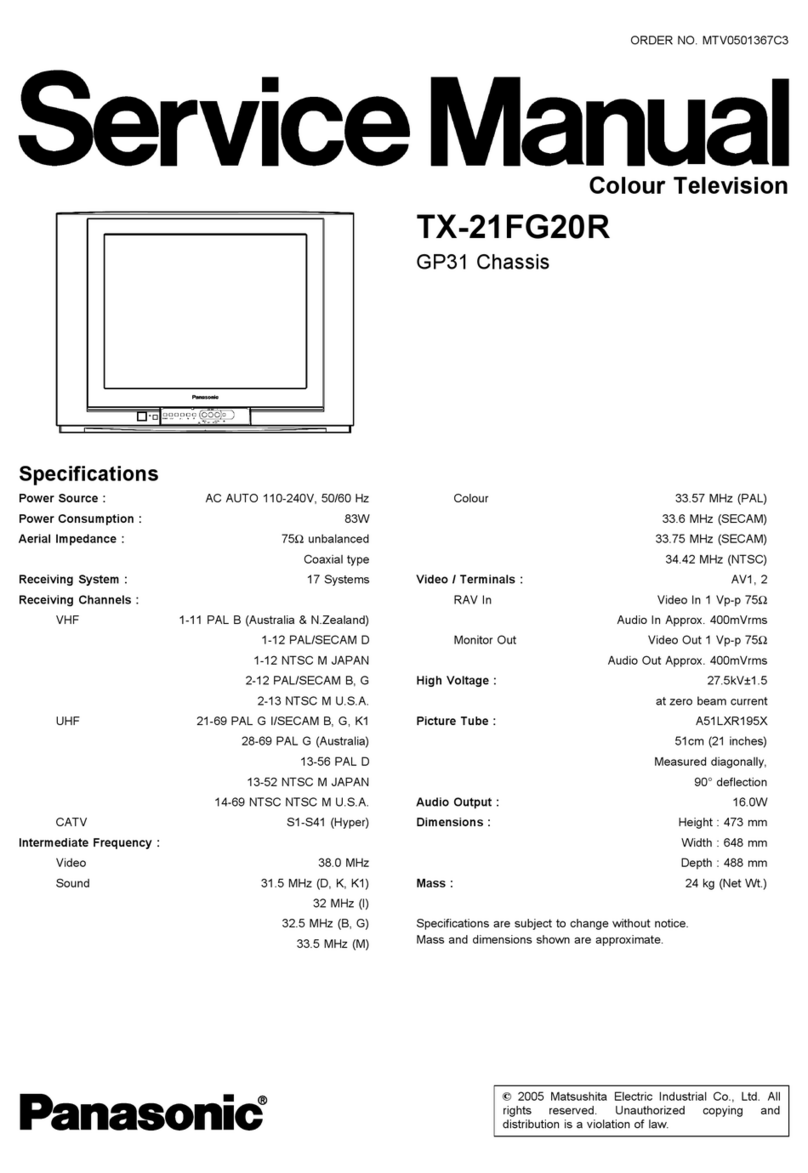Toshiba 32ZP18P, 36ZP18P User manual

owner’s manual
colour television
32ZP18P
36ZP18P
TOSHIBA
The power to open people’s eyes

Contents
CONNECTING OTHER EQUIPMENT
FOR YOUR GUIDANCE
SETTING UP
SPECIAL SOUND EFFECTS
TELETEXT
ADDITIONAL FEATURES
USING YOUR TV
For your safety –Some do’s and don’ts for you to be aware of and other points to follow 3
Your new television’s remote control – an at-a-glance guide 4
Connecting the speakers 5
Connecting and turning on your new TV 6
Choosing the language and system, Auto tune 7
Auto tune continued 8
Manually tuning your TV – an alternative to Auto tune 9
Swapping programme positions and programme skip 10
General controls – changing programme position, sound control, bass/treble/balance 11
Widescreen viewing – Superlive, Cinema, Subtitle, 14:9, Wide, 4:3
12
Picture adjustments – picture size/position, WSS – Widescreen Signalling 13
Picture adjustments – picture preferences, scan mode, digital noise reduction,
picture still, blue screen 14
Dolby Digital 15
Dolby Pro Logic – Surround Test Mode 16
Digital Surround Processor– Surround Sound Features 17
Teletext – setting up 18
Teletext – Auto and List modes 19
Teletext – control buttons 20
The timer and time display – informing the TV to turn on/off and time display 21
Panel lock – disabling the buttons on the front of the TV 21
Stereo and bilingual transmissions – stereo or dual language broadcasts 21
AV connections and input selection – input and output sockets for connected equipment 22
Back connections 23
Front connections and controls 24
The Menus – a display of the main on-screen menus for your reference 25
Questions and Answers 26
Index, Specifications and Accessories – information on your television 28
2

3
For your safety
SETTING UP
This equipment has been designed and manufactured to meet international safety standards but, like any electrical
equipment, care must be taken if you are to obtain the best results and safety is to be assured. So, please read the
points below for your own safety. They are of a general nature, intended to help you with all your electronic
consumer products and some points may not apply to the goods you have just purchased.
DON'T remove any fixed cover as this may expose
dangerous voltages.
DON'T obstruct the ventilation of the equipment, for
example, with curtains or soft furnishings.
Overheating will cause damage and shorten the life
of the equipment.
DON'T allow electrical equipment to be exposed to
rain or moisture.
DON’T place hot objects such as candles or
nightlights on, or close to, the equipment. High
temperatures can melt plastic and lead to fires.
DON'T use makeshift stands and NEVER fix legs with
wood screws. To ensure complete safety, always fit the
manufacturer’s approved stand or legs with the fixings
provided according to the instructions.
DON'T listen to headphones at high volume, as such
use can permanently damage your hearing.
DON'T leave equipment switched on when it is
unattended, unless it is specifically stated that it is
designed for unattended operation or has a standby
mode. Switch off using the switch on the equipment
and make sure your family know how to do this.
Special arrangements may need to be made for
infirm or handicapped people.
DON'T continue to operate the equipment if you are
in any doubt about it working normally, or it is
damaged in any way – switch off, withdraw the mains
plug and consult your dealer.
ABOVE ALL – NEVER let anyone, especially
children, push anything into holes, slots or any
other openings in the case – this could result in a
fatal electric shock.
NEVER guess or take chances with electrical
equipment of any kind – it is better to be safe
than sorry.
Leave at least 10cm clearance around the television to
allow adequate ventilation. This will prevent the TV
from overheating and consequential possible damage
to the TV. Dusty places should also be avoided.
Damage may occur if you leave the TV in direct sunlight
or near a heater. Avoid places subject to extremely high
temperatures or humidity, or locations where the
temperature is likely to fall below 5ºC (41ºF).
The mains supply required for this equipment is 230v
AC 50Hz. Never connect to a DC supply or any other
power source. DO ensure that the TV is not standing
on the mains lead. DO NOT cut off the mains plug
from this equipment, this incorporates a special Radio
Interference Filter, the removal of which will impair its
performance. In the UK, the fuse fitted in this plug is
13A, and is approved by ASTA or BSI to BS1362. It
should only be replaced by a correctly rated and
approved type and the fuse cover must be refitted.
IF IN DOUBT PLEASE CONSULT A COMPETENT
ELECTRICIAN.
DO read the operating instructions before you attempt
to use the equipment.
DO ensure that all electrical connections (including the
mains plug, extension leads and inter-connections
between pieces of equipment) are properly made and
in accordance with the manufacturers’ instructions.
Switch off and withdraw the mains plug before making
or changing connections.
DO consult your dealer if you are ever in doubt about
the installation, operation or safety of your equipment.
DO be careful with glass panels or doors on
equipment.
Air Circulation… Do not…
Heat Damage…
Mains Supply…
Do…

… For quick reference
to topics, please see
the
INDEX
at the end of
this manual.
4
Carefully slide the back cover downwards to reveal the battery compartment and make sure you insert
the batteries the right way round.
All Toshiba batteries are Cadmium and Mercury free. Suitable battery types for this
remote are R03 or AAA.
Do not throw your old batteries into a fire, dispose of them in a designated disposal
area. Do not combine a used, old battery with a new one or mix battery types.
The performance of the remote control will deteriorate beyond a distance of
five metres or outside an angle of 30 degrees from the centre of the TV.
P
P
VTR/DVD
VTR/DVD
To display teletext
Selectable picture preferences
To mute the sound
To exit Menus
Super Woofer
To alter the volume
Dolby Surround
Teletext control buttons
To change programme positions
and teletext pages
To bring up on-screen information and
for the teletext initial/index function.
To select input from external sources
Stereo/bilingual reception
On-screen Menus
Widescreen mode selection
1 or 2 digit
programme selection
Number buttons
The batteries... and the effective range of the remote…
Your new television’s remote control
Simple, at-a-glance reference of your remote control’s buttons…
For On/Standby mode
These buttons will operate your
TOSHIBA VIDEO and DVD.
For the DVD you must press the
F button at the same time…
to switch ON/OFF, press
to STOP, press
to PLAY, press
to PAUSE, press
to FAST FORWARD/SKIP, press
to REWIND/SKIP, press
Fbutton – use with the colour buttons to
select additional teletext features
and with the VTR buttons for a
TOSHIBA DVD player.
It also increases the speed of most functions.
SETTING UP
*
Please see
page 25 for
details of the
main on-screen
menus
To change programme positions and
teletext pages
To alter the volume
When using menus the arrows move
the cursor on the screen up, down,
left or right. ENTER to confirm your
selection.

5
SETTING UP
In order to enjoy the full benefits of Surround Sound it is necessary to connect two rear surround speakers
and two front extension speakers.
When connecting external Hi-Fi speakers, they must be 8 ohm, 10W minimum. The front speakers
should be positioned either side of the TV and will deliver the left and right sound. The internal speakers will
then deliver the centre channel required to enjoy Dolby Digital.
When connecting external speakers always make sure that the power is OFF.
Connecting the speakers
SURROUND
8
K
TV
These are suggested
positions only.
Place your speakers to
suit and adjust the
balance as necessary.
Main
Speaker Main
Speaker
Surround
Speaker Surround
Speaker
*
Don’t
forget to set
the switch to
EXT.
*
WARNING: do not
attempt to
share
external speakers
with your Hi-Fi as
serious damage
may occur.
!
To connect extension front speakers simply press the
connector and insert the cable. You must now set the switch
to EXT as shown.
Always make sure that the lead with the stripe (or raised
edge) is connected to the RED terminal and the other
(smooth) lead is connected to the BLACK terminal.
Extension Front Speaker connections
Surround Speaker connections
To connect surround speakers simply press the connector
and insert the cable. These speakers should be sited in
line with the normal viewing position

…and with the remote control:
Press the Standby Button i:
This allows you to put the set
into standby mode when leaving
the TV unattended for short
periods of time.
To return to TV mode press the
ibutton, or any of the
numbered buttons on the remote control. The picture may take a few
seconds to appear.
KMAIN 8
PB/CB
PR/CR
Y
(AUDIO/VIDEO)
COMPONENT
VIDEO INPUT
(AUDIO/VIDEO)
AUDIO
AUDIO
(4)
EXT INT
K(AUDIO/VIDEO)
OPTICAL COAXIAL
KMAIN 8
PB/CB
PR/CR
Y
(AUDIO/VIDEO)
COMPONENT
VIDEO INPUT
(AUDIO/VIDEO)
AUDIO
AUDIO
(4)
EXT INT
K(AUDIO/VIDEO)
OPTICAL COAXIAL
IN
OUT
IN
OUT
SETTING UP
6
Connecting and turning on your new TV
The TV back connections…
To conserve energy it is best to turn your TV off and not to leave it in Standby, unless the timer has
been set.
Connect the aerial to the socket on the rear of the television. If you use a Set Top Box and/or a video recorder it is
essential that the aerial cable is connected through the Set Top Box and/or through the video recorder to the television.
DO NOT CONNECT SCART LEADS UNTIL THE TELEVISION IS FULLY TUNED.
the back of your TV
AERIAL
VIDEO RECORDER
SET TOP BOX*
AERIAL CABLE AERIAL CABLE
…and switching your new TV on…
ORANGE = Bilingual transmission
being received
GREEN = Stereo transmission
being received
RED = Power On
GREEN = On Timer is set
On the front of the TV…
If the red power-on light is unlit, press the POWER button on the front
of the TV to switch the set on and then press a number button on the
remote control to see the screen.
*
a SET TOP BOX could be:
Digital Satellite, Analogue
Satellite, or any other
compatible decoder.
*

Press the MENU button, and use either the
Sor Rbutton to select the FEATURE MENU
from the top bar.
Now repeatedly press the Qbutton until
Language is highlighted in the FEATURE
MENU options.
Press the Sor Rbutton to view the language
options available. As you view each language, the
wording on the menus will automatically change
for you.
When you have got the right language, press the
EXIT button. All the displays will now appear in
that language.
7
SETTING UP
Press the MENU button on the remote control,
and then either the Sor Rbutton to select the
SET UP option from the top bar.
Now press the Qbutton to highlight System
from the SET UP menu options and then the
Sor Rbutton repeatedly to select your System:
Choosing the language and system,
Auto tune
The on-screen menus can be viewed in different
languages and you will need to choose the
system necessary for where you live.
P
P
To select your language…
1
2
3
4
To select your system… Continental Europe only
1
2
SET UP
t
t
ttt
t
Colour AUTO
System I
Auto tune
Manual tune
Programme swap
Manual fine tuning
t
Press the Qbutton to highlight Auto tune while
you are in the SET UP menu. Press the Rbutton.
You will be informed that all previous
settings will be lost.
Press the ENTER button on the remote control to
begin the search for available stations.
xxxxx
will flash and each station found will
appear in succession on the screen.
Allow the television to complete the search.
1
2
3
SEARCHING
Channel : 21
Station : – – – – – – –
AUTO TUNE
t
t
t
t
t
EXIT : To exit
Before running Auto tune it is important that you select
your desired System as described here. Should you also
wish to tune to alternative Systems this must be done
manually, after using Auto tune. See page 9.
You can now run Auto tune…
First of all turn on your Set Top Box and tune to a main
channel. Also turn on the video recorder and set it to
Standby – this will enable your television to identify and
allocate the necessary programme positions.
*
*
*
Continental Europe only
FEATURE MENU
ttt
AV connection
Picture size/position
Teletext
Surround set up
Language ENGLISH
Panel lock OFF
WSS ON
t
FEATURE MENU
tttttt
EXIT : To exit
t
B/G – Continental Europe, D/K – Eastern Europe,
I – UK, L1(12) L 2(8) – France
*
SET UP

P
P
8
Auto tune continued
SETTING UP
YOU MAY NOW CONNECT YOUR SCART LEADS
!
1
2
3
When the search is complete, the screen will
display a list of all the available BBC1 signals.
If more than one is shown press the Qor P
button to highlight and view the choices.
Choose the best picture and sound.
Press the ENTER button to store BBC1 on
programme position 1.
Note: You can only choose one BBC1 station
at this stage.
Position 2 will appear showing the BBC2 choices.
Repeat the steps above to allocate the required
signal.
For the UK only…
1
2
3
4
When the search is complete press the Qor P
button to move through the list to select the
channel you wish to allocate to programme
position 1.
Press ENTER to store.
You can use the Programme swap facility later
if required, see page 10.
Repeat the procedure for all the programme
positions you wish to store including the Set Top
Box. If you wish to leave a programme position
free, for use in the future, store an unwanted
channel on it.
Press the EXIT button when you have finished
and press the number buttons to view a channel
of your choice, e.g. 01. To tune any stations on
different SYSTEMS, use the Manual tune
facility from the SET UP menu, as described on
page 9.
For Continental Europe only…
4
5
UK and Continental Europe settings
AUTO TUNE
Prog. Station Channel
1 BBC1 22
BBC1 39
ENTER : To store
EXIT : To exit
Repeat for all the remaining programme
positions you wish to tune including a Set Top
Box, if connected. If there are no signals for any
programme positions, simply press the ENTER
button to move on to the next one. Press EXIT
to finish and one of the number buttons to view
the TV.
…Your TV
may display
different
Channel
numbers…
AUTO TUNE
Prog. Station Channel
1 – – – – – – – 01
– – – – – – – 02
– – – – – – – 05
– – – – – – – 07
– – – – – – – 08
– – – – – – – 12
ENTER : To store
EXIT : To exit
t
…Your TV
may display
different
Channel
numbers…

9
Manual tune…
SETTING UP
Manually tuning your TV
As an alternative to Auto tune, you can tune-in your Toshiba television manually using Manual tune. For
example: if you have used Auto tune but wish to tune-in a station on another SYSTEM (see page 7) or, you
are unable to connect the TV to your video with a Scart lead.
P
P
This TV has direct channel entry if
the channel numbers are known.
Select the
Manual tune
screen.
Enter the required programme number, then
enter the appropriate channel number.
Select the station name and press
ENTER
to store.
If you do not wish to store it, press the Rbutton to
continue the search. If you do wish to store it
press Qto highlight the Programme no.and
then press Sor Rto select the number you wish to
store it on. (We suggest 0 for the video recorder.)
Press Qto highlight Station and Sor Rto select
a Station name if required.
Press ENTER if you wish to store the
broadcast displayed.
To repeat the process, highlight Search and press
the Rbutton to look for the next station.
Press EXIT when you have finished.
Press the Rbutton twice to start the search.
1
2
RRR (Search) will flash and the television will
show the channel numbers whilst the search is
progressing.
On finding a station it will show on the television.
3
4
5
6
7
8
From the top menu bar select SET UP and with
the Qbutton select Manual tune.
EXIT : To exit
t
t
tttt
t
t
Colour AUTO
System I
Auto tune
Manual tune
Programme swap
Manual fine tuning
Programme skip
OFF
tt
MANUAL TUNE
t
Back
Search
>>>
Programme no. 01
Channel 024
Station – – – – – – –
ENTER : To store
EXIT : To exit
t
t
t
t
t
t
t
t
SET UP
P
LEASE
N
OTE
*
*
*
Continental Europe only
If you cannot connect your
television to the video recorder using
Scart leads you will need to allocate a
programme position on the television
for the video recorder. Insert a pre-
recorded tape and press PLAY on the
remote control, then Manual tune…
!

Using the remote, select the channel to be skipped.
Select the SET UP menu, and then
Programme skip.
Press Rto turn Programme skip ON.
Then press the EXIT button. Change to an
un-skipped channel before switching off the TV.
It is necessary to repeat from step 1 for all the
channels to be skipped. The skipped channels
cannot now be selected by the ePfbuttons or
by the controls on the front of the TV but can still
be accessed by the number buttons on the
remote control.
To turn Programme skip OFF, repeat the
procedure on the chosen channel.
Press the MENU button and then the Sor Rbutton
to select the SET UP option from the top bar.
Press Qto highlight Programme swap and
Rto select.
The list of stations is now showing. With the
Qor Pbutton highlight the station you want to
move and press ENTER to select. The station you
are moving will show on the bar at the bottom.
P
P
10
SETTING UP
Swapping programme positions and
programme skip
After Auto tune if you want to swap the position of certain programmes you can. Program swap is an easy
way of storing each channel on the programme position of your choice. Program skip stops the viewing of
certain channels. With the Qor Pbuttons again, move through
the list to your preferred position
Press ENTER again. You will see that the
programme positions have now been swapped.
To prevent certain programmes from being viewed, for
example, a certain film by your children whilst your are
out for the evening, you can skip the programme
position and take the remote control with you. The
television will still function as normal using the controls
on the front of it, but the set will not show the skipped
programme position.
1
2
3
3
2
1
5
4
t
t
t
Programme swap
Manual fine tuning
Programme skip ON
SET UP
t
t
4
5
6
Skipping programmes…
To swap programme positions…
*
Continental Europe only
SET UP
t
t
tttt
EXIT : To exit
tt
Colour AUTO
System I
Auto tune
Manual tune
Programme swap
Manual fine tuning
Programme skip OFF
tt
*
*
…remember…
you must select
each channel
separately.
An
*
on the screen indicates
a skipped programme position.
…Remember… each channel
has to be INDIVIDUALLY
selected and set with
Programme skip ON or OFF.
PROGRAMME SWAP
ENTER : To swap EXIT : To exit
Prog. Station Channel
1 BBC1 22
2 BBC2 28
3 ITV 25
4 CH4 32
4 CH4 32
t
t

11
Selecting and changing programme position…
USING YOUR TV
General controls
Press the MENU button on the remote control, and the
Sor Rbutton to select the SOUND option from the top
bar.
Press the Qbutton to highlight Bass, Treble or
Balance from the SOUND menu and then the
Sor Rbutton to change the setting.
Volume 00
1
BBC1
Stereo
Volume
Press the
j
—+
button or the
SandRbuttons to adjust the volume.
Sound Mute
Press the kbutton to turn the sound off.
Press it again and the sound will return.
Super Woofer –
to enhance the depth of sound
Press the
nbutton repeatedly to turn the Super
Woofer on and off. Press the Sor Rbutton to adjust
the effect.
Sound control…
Bass, treble and balance adjustments…
Enter the desired programme position number using the
numbered buttons on the remote control.
For programme positions below 10, press the -/-- button
to select —on the screen then enter the desired
programme position number.
For programme positions above 9, press the -/-- button to
select — — then enter the desired two digit programme
position number.
You can also change the programme position by using
the ePfbutton or the Qor Pbuttons.
The programme position will be displayed
on the screen with the Stereo/Mono
indicator, described on p21.
P
P
VTR/DVD
VTR/DVD
Pressing the F
button at the
same time will
speed up most
functions…
SOUND
Bass +01
Treble 00
Balance 00
t
t
t
t
t
t
EXIT : To exit

USING YOUR TV
P
SUPER LIVE
SUPER LIVE
Press the
SIZE
button repeatedly
to view the
options available.
This setting will enlarge the image
to fit the screen by stretching
the image horizontally, holding
the correct proportions at the
centre of the image.
This set is capable of showing broadcasts in a number
of formats. Depending on the type of broadcast being
transmitted you may select between SUPER LIVE,
CINEMA, SUBTITLE, 14:9, WIDE and 4:3.
Widescreen viewing
12
CINEMA
CINEMA
When watching ‘letterbox format’
films/video tapes, this setting will
eliminate or reduce the black bars
at the top and bottom of the screen
by zooming in and selecting the
image without distortion.
WIDE
SUBTITLE
SUBTITLE
SUBTITLE
WIDE
When subtitles are included on a
letterbox format broadcast, this
setting will raise the picture to
ensure that all the text is
displayed.
Use this setting when watching a widescreen
DVD, widescreen video tape or a 16:9
broadcast (when available). Due to the range
of widescreen formats (16:9, 14:9, 20:9 etc.)
you may see black bars on the top and bottom
of the screen.
4:3
4:3
Use this setting to view a true 4:3 broadcast.
14:9
14:9
Use this setting when watching a 14:9 broadcast.
Experiment with
them all until you
find a style that
suits you…
Whenever the
MENU
button is
pressed the picture size setting will
change while the menus are ON the
screen. This is to ensure the menus do not
overlap the edges of the viewable area.
!

Picture size/position settings
Picture size/position
USING YOUR TV
13
Picture adjustments
When this TV receives a true Widescreen picture and WSS is ON, it will automatically be displayed
in Widescreen format, irrespective of the TV’s previous setting.
Press the MENU button, and use
either the Sor Rbutton to select the
FEATURE MENU. Use Qto move
down to WSS.
Using the Sor Rbuttons turn WSS ON
or OFF.
1
2
WSS – Widescreen Signalling
Adjustment to the horizontal and vertical position and height of the picture may be made to suit your viewing
preferences.
Press the MENU button, and use the
Rbutton to select FEATURE MENU.
Now repeatedly press the Qbutton until
Picture size/position is highlighted.
1
2
3
4
5
FEATURE MENU
Press the Rbutton to view the options available
for the picture format you have selected.
With the Pand Qbuttons, highlight an option
and with the Rbutton select.
Now use the Sor Rbuttons to adjust the settings
as required and press EXIT when you have
finished.
In SUPER LIVE:
ttt
AV connection
Picture size/position
Teletext
Surround set up
Language ENGLISH
Panel lock OFF
WSS ON
t
FEATURE MENU
tttttt
EXIT : To exit
t
EXIT
:
To exit
PICTURE SIZE/POSITION
EXIT : To exit
tttt
ttt
t
AV connection
Picture size/position
Teletext
Surround set up
Language ENGLISH
Panel lock OFF
WSS ON
ttttttt
FEATURE MENU
The options
available to you
when in the
Picture
size/position
screen
will vary depending
upon the widescreen
format you have
previously chosen, as
detailed on page 12.
!
Back
Horizontal position
Horizontal width
Vertical position
Vertical height
t

14
USING YOUR TV
Picture adjustments continued
P
P
1
Blue Screen…
In the second section of the
FEATURE MENU select
Blue screen ON or OFF.
This television offers you the choice of personalising the picture style to suit your own preferences.
DNR – Digital Noise Reduction
1
1
2
3
Select DNR from the PICTURE
menu. Select between AUTO
and OFF to obtain the best picture.
The differences may not always be noticeable.
Using the latest technology this
television’s 100Hz double
scanning plus digital picture
processing produces a flicker-
reduced picture. In addition, a
still – similar to freeze frame on a
VTR – can be held on the screen.
By pressing the mbutton you can view the
different picture styles available:
Picture mode-1 to 3for preset options and,
Picture mode-M is for your own settings:
So, to set your own, choose PICTURE from the
top menu bar.
1
Picture preferences
Within this PICTURE menu you
have the options to adjust the
Contrast, Brightness, Colour,
Tint and Sharpness.
Using the Sor Rbutton
alter to suit your taste.
The Tint can only be
adjusted on a signal
from an NTSC video
recorder or DVD
player when the
television is in AUTO
colour mode.
Picture Still
Scan Mode
1
2
Select Scan mode from the
PICTURE menu.
With the Sor Rbutton select between 100Hz
and NATURAL, to choose the picture you prefer
– the difference may only be slight.
Pressing the ubutton will hold an image on the
screen. Press uagain to return to TV mode.
EXIT : To exit
FEATURE MENU
t
t
t
Blue screen ON
Use the Pand Q
buttons to move up
and down this
two-part menu.
PICTURE
ttt t t
EXIT : To exit
Contrast 75
Brightness 50
Colour 50
Tint 00
Sharpness 00
Scan mode 100Hz
DNR AUTO
tt
t
When no signal is being received, the TV will turn
off the sound and switch the screen to blue. After
20 minutes the TV will switch to Standby mode.
DNR enables you to ‘soften’ the screen
representation of a weak signal.
ttttt
t

SPECIAL SOUND FEATURES
1515
15
Dolby Digital
Dolby Digital is available from DVD players, some games console players, etc. These must be connected using
a Scart or phono lead for the picture AND an optical or a coaxial cable for the sound see page 23.
Dolby Digital
Adjustments
The DVD is connected to the TV using phono leads to
the COMPONENT VIDEO INPUT or a Scart lead to
Scart 3, and an optical or coaxial cable to the
optical/coaxial sockets, DA-1 or DA-2.
The Digital input in the AV CONNECTION
menu (see page 22) is set to EXT3 if Scart 3 is used
or EXT4 if the DVD is connected to COMPONENT
VIDEO INPUT.
If external front speakers are
connected the external switch (found on the back of
the TV) is set to EXT.
Rear speakers are connected and the Rear
Speaker option in the Surround set up menu
is set to YES.
Set the volume and balance of the front speakers to your preference.
Play a Dolby Digital source and press the Mbutton on the TV’s remote control.
The title, e.g.Dolby Digital 3/2, is an indication of the channels available from
your current sound source, see the table.
To adjust the levels, use the Por Qbutton to select the centre and two rear
speakers in turn. Press either the Sor Rbutton to adjust. The number of
adjustable speakers will depend upon the signal received from the DVD player.
To cancel the test press the EXIT button.
1
1
2
3
4
2
From the FEATURE MENU select Surround set
up.
With Delay time highlighted, use the Sor Rbutton
to change the setting to a value that suits you.
Press EXIT when you have finished.
1
2
3
3
4
Dolby Digital
1/0
= Centre speaker only.
2/0
= Front Left and Front Right only.
2/1
= Front Left and Front Right +
Rear Left and Rear Right combined.
2/2
= Front Left and Front Right +
Independent Rear Left and Independent Rear Right.
3/0
= Front Left and Front Right and Centre.
No Rear Speakers.
3/1
= Front Left and Front Right and Centre +
Rear Left and Rear Right combined.
3/2
= Front Left and Front Right and Centre +
Independent Rear Left and Independent Rear Right.
Arrange the speakers around your normal viewing
positions (as shown on page 5) and then make sure
that the TV is set up as follows:
DELAY TIME…
If you sit a long way from the TV and close to the rear
speakers the sound from the rear will reach you before
the sound from the front. You can use a higher setting
in the Delay time option to restore the correct balance.
If rear speakers are NOT
selected in the
Surround set up
menu, you will not hear any sound
from your rear speakers.
!
If the DVD playing is recorded in Dolby Pro Logic,
i.e. 4 channel stereo (front left, front right, centre and
rear) the TV will detect the 4 channels.
In this instance, when the Surround Test Mode is
run the TV will cycle through the four channels in use.
In order to get full Dolby Digital, the DVD
player must be connected using the coaxial or
optical links.
!
Alternatively, use the
Test mode in the
SURROUND SET UP
menu.
*

16
SPECIAL SOUND FEATURES
16
16
Dolby Pro Logic
Press the Mbutton to bring up the
SURROUND menu. With Dolby Pro Logic
selected, EXIT and go to the FEATURE MENU
to select the SURROUND TEST from the
Surround set up menu.
Use the Sand Rbuttons to adjust.
1
2
3
Inserting the headphone jack will mute the sound from all
speakers and deliver a normal stereo left and right signal.
There are no Dolby Digital or Surround effects available when
using headphones.
P
P
From the FEATURE MENU select Surround
set up.
Using the Sor Rbuttons turn Rear speaker to
YES.
Sit in your usual viewing position.
Dolby Pro Logic – available on many TV broadcasts in addition to video tapes. Uses a combination of 4
speaker channels – front-left, centre, front-right and two rear. If external front speakers are not connected,
these channels will be delivered through the speakers in the TV.
1
2
The TEST will play a ‘white noise’ through
each speaker in turn. The display will show
you which speaker is in play, adjustments
may be made whilst it is highlighted.
EXIT : To exit
Left
Centre
Right
Rear right
Rear left
t
t
61
t
t
61
t
t
51
!
*
EXIT : To exit
SURROUND SET UP
t
tt
t
t
Back
Rear speaker YES
Surround test
Delay time
Remember… Check that Rear speakers are
connected and the Rear speaker option in the
Surround set up menu is set to YES.
!
Dolby Pro Logic
Surround Test Mode
YES in the Rear
Speakers option must
be chosen for the Test
Mode below to function…
!
SURROUND TEST
If you cannot connect rear speakers try
Dolby 3 Stereo, but you must have external
front speakers connected and the external
switch set to EXT.
!

Digital Surround Processor
17
SPECIAL SOUND FEATURES
Please note: Hall, Theatre, Disco, and Stadium effects are only available on a stereo signal. Pseudo
surround works on both mono and stereo signals. All of the Digital surround modes are adjustable, the
method of adjustment being described below, is the same for all the Digital Surround effects.
Surround Sound Features
Surround Sound: Hall
To reproduce in the living
room the surround effects
similar to those
experienced in a large
concert hall. Ideal for TV
programmes or music
video tapes.
Surround Sound:
Theatre
To reproduce the
surround effects similar
to those experienced in
a movie theatre filled
with a rich warm sound.
Ideal for movies with
stereo sound. Surround Sound:
Disco
To create the
atmosphere of a
room so full of
music that it
seems to engulf
the listener. An ideal
sound mode for
listening to pop videos.
Surround
Sound: Stadium
To reproduce the
surround effects
similar to those
experienced in a
large football or
baseball stadium
packed for a live game.
Surround Sound:
Pseudo
To create a
synthetic sound
effect for movies
and TV shows
recorded in
mono.
Surround Sound: Off
Uses only the front left and right speakers. This mode can be
selected for watching news broadcasts and the like which
require no special sound features.
Press the Mbutton to bring up the
SURROUND menu.
Press the Por Qbutton repeatedly to select
the digital mode which best suits the type of
broadcast.
Then press the Rbutton to access the
adjustments screen and with the P,Q,SandR
buttons, adjust the levels as required.
SURROUND SOUND uses a
combination of 4 speakers – front-left,
front-right and two rear speakers.
1
2
3
TV
…if you choose to
adjust one Digital
Surround mode,
you will not effect
the others.

18
TELETEXT
P
P
VTR/DVD
VTR/DVD
Selecting the character set and viewing mode and general information
This TV offers two ways of viewing text – AUTO and LIST which are explained on the next page.
Teletext – setting up
From the FEATURE menu, use the Por Q
button to highlight Teletext and then the Rbutton
to select.
Before using teletext you can choose the correct alphabet
(Character) and whether to view in List or Auto mode
(explained on the next page).
1
About teletext
The TEXT TV button:
Pressing the TEXT TV button once will bring
up the teletext screen. Pressing it again will
split the TV screen in two, with the TV picture
and the text screen side by side. A third press will return
you to the normal TV screen. You need to return to
normal viewing if you wish to change channels.
When you first press the TEXT TV button to access the
text service, the first page you see will be the initial page.
In Auto mode this displays the main subjects available
and their relevant page numbers.
In List mode you will see your chosen INITIAL page
(explained on the next page).
To access any teletext page, enter the 3 digit page
number, using the numbered buttons on the remote
control, e.g. 430.
To advance to the next page of teletext, press the
P fbutton, to go back to the previous page press the
P ebutton.
2
3
4
5
TELETEXT
tt
t
To select the Mode, with the the Qbutton
highlight Mode.
With the Sand Rbuttons choose Auto or List.
Press EXIT to finish.
CHARACTER-1 for:
English Français Deutsch
Italiano Español Jazyk
Svenska Português Türkçe
CHARACTER-2 for:
Po polsku Romana Jazyk
Srpski Français Deutsch
Italiano Svenska
tt
Back
Character
CHARACTER-1
Mode Auto
With Character highlighted, use the Rbutton to
select your required character set:
CHARACTER-1 or CHARACTER-2:
Selecting characters and modes

19
TELETEXT
19
Selecting pages
Teletext continued
– Auto and List modes
There are two Modes: Auto will display FASTEXT, if
available. List will display your four favourite pages. In
either mode, as an alternative to the coloured buttons
you can access a page by entering a 3-digit number,
using the buttons on the remote control.
Press the TEXT TV button to select teletext.
To programme the set to hold your 4 favourite pages in
memory. Select the LIST function by pressing the
GREEN button.
Enter the first page number (in purple on screen) then
press the GREEN button. Repeat for each of the desired
4 pages.
To view these 4 selected pages press the RED button for
ROTATE. An arrow head will point to the page number
of the next favourite page that will be displayed on
pressing the RED button again.
On programme positions 0-9 you can pre-programme
an INITIAL page. Select the INITIAL function by
pressing the YELLOW button. P*** will appear in the
top left corner of the screen. Enter the required 3 digit
page number. As you key in the desired INITIAL
page, for example page 220, the numbers will
replace the ***.
Whenever text is first selected on this programme
position this INITIAL page will be displayed.
Press the TEXT TV button to access teletext.
In Auto mode, if FASTEXT,is available, you will see four
coloured titles at the base of the screen.
To access one of the four given subjects, press the
relevant coloured button on the remote control,
corresponding to the title.
For further information on your particular text system(s),
see the broadcast teletext index page or, consult your
local Toshiba dealer.
List
Auto
The rest of the text control buttons are
explained on the next page…
P
P
VTR/DVD
VTR/DVD

To view a TV programme whilst
waiting for your text page:
When in teletext mode, if a page selection is made and then the F
and the tbuttons are pressed, a normal picture will be
displayed. The TV will indicate when the page is present by
displaying the title bar of the text page at the top of the screen. Press
the TEXT TV button to view the page.
To display news flashes:
To view news flashes as they are broadcast, select the news flash
page for the particular teletext service (see the index page of teletext
service). Press the F and the tbutton. The news flashes will be
displayed as and when they are broadcast. Press the Fand the
tbuttons to cancel the display.
TELETEXT
20
Teletext continued
– control buttons
Using the buttons on the remote control…
Now you have set up teletext, below is a guide to the remote control teletext buttons and their functions.
Remember: Cancel
text before
changing channels.
Press TEXT TV
button twice.
2
3
1
Remember…
to use the teletext
buttons for these four
functions, you must
press the Fbutton at
the same time.
4
5
6
To display an index/initial page:
In AUTO mode
Press the Tbutton to access index pages. The one displayed is
dependant on the broadcaster.
In LIST mode
Press the Tbutton to return to your INITIAL page.
To hold a wanted page:
and
At times it is convenient to hold a page of teletext. Press the Fand
the qbuttons and the word HOLD will appear in the top left of
the screen. Press qagain to release.
p
q
TEXT TV
1
2
To enlarge the teletext display size:
and
Press the F and the
s
buttons once to enlarge the top half of the
page, press again to enlarge the bottom half of the page. Press
again to revert to the normal size.
5
3
6
4
t
r
s
To display a page of teletext:
Press the TEXT TV button to display teletext. Press again to split
the TV/teletext screen to continue viewing the normal broadcast
picture whilst viewing a text page. Press a third time to return to
normal TV. You cannot change programmes until you return to
normal TV.
To reveal concealed text:
and
Some pages cover topics such as quizzes and jokes. To discover
the solutions press the F and the rbuttons.
and
You must
cancel the
news flash
page before
changing
channels.
*
Table of contents
Other Toshiba TV manuals
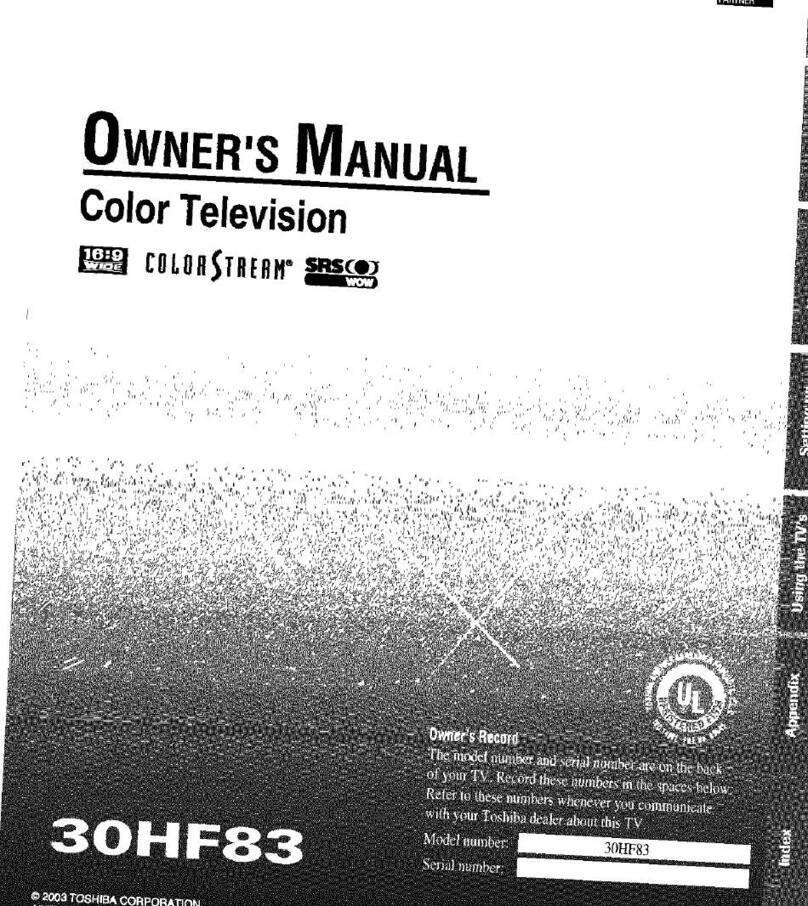
Toshiba
Toshiba 30HF83 User manual
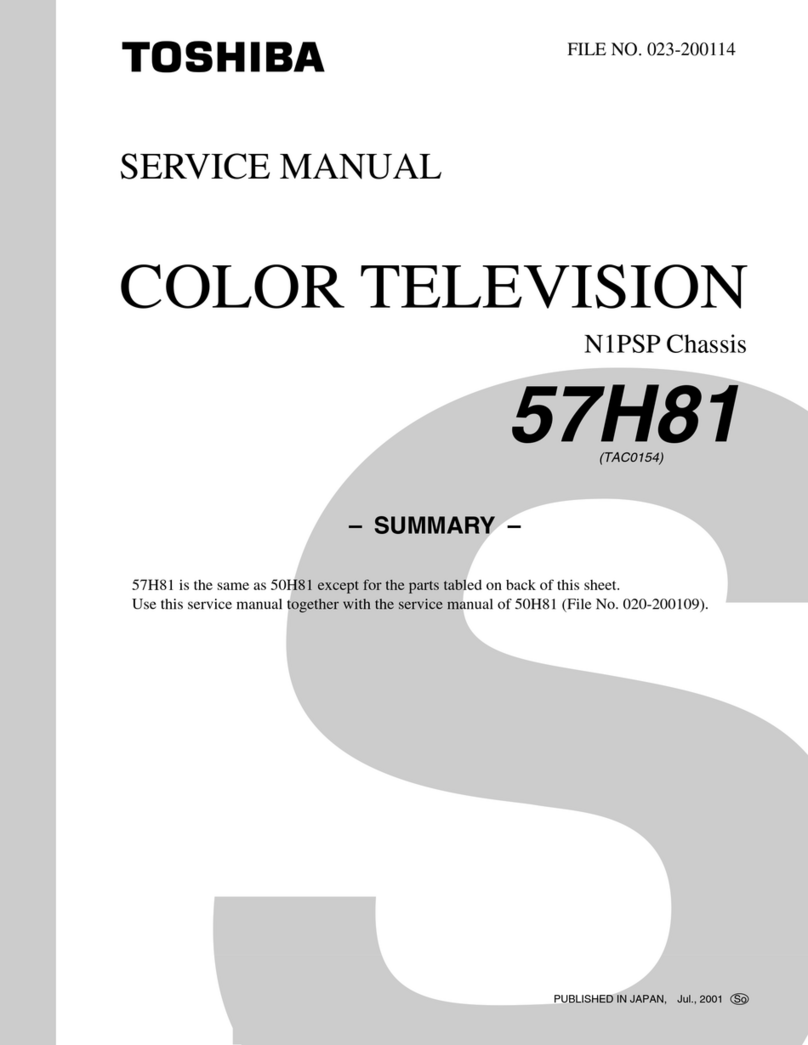
Toshiba
Toshiba 57H81 Application guide
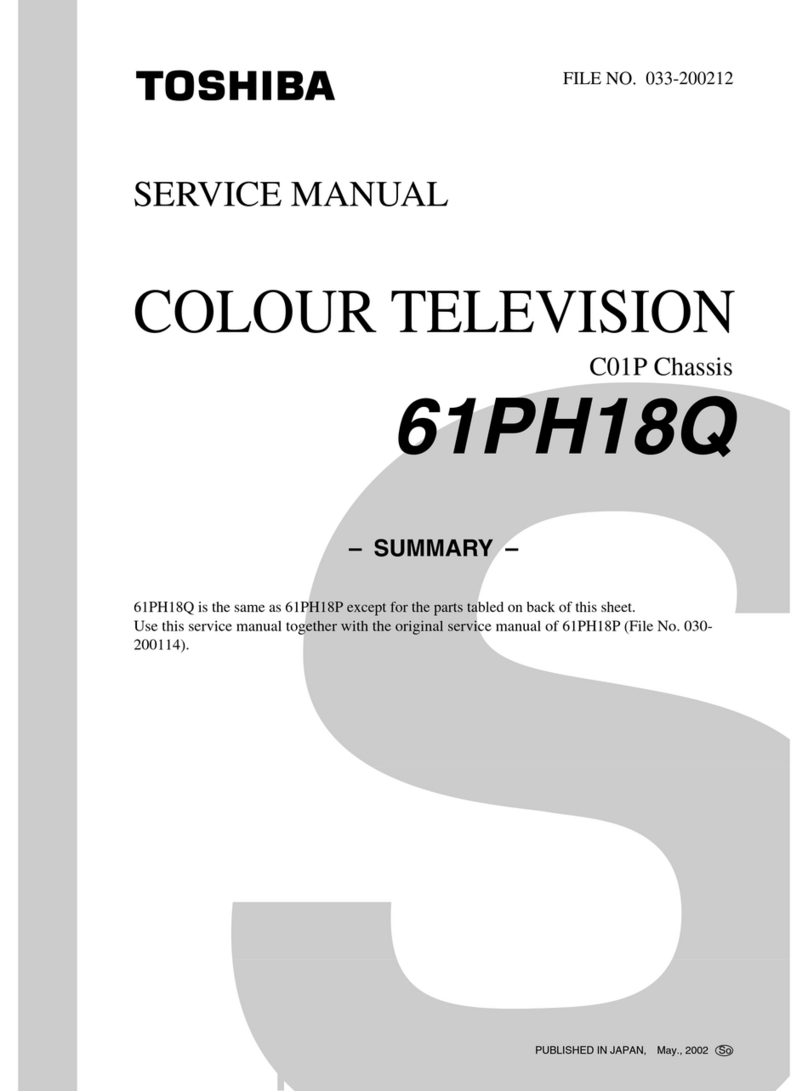
Toshiba
Toshiba 43PH14P User manual
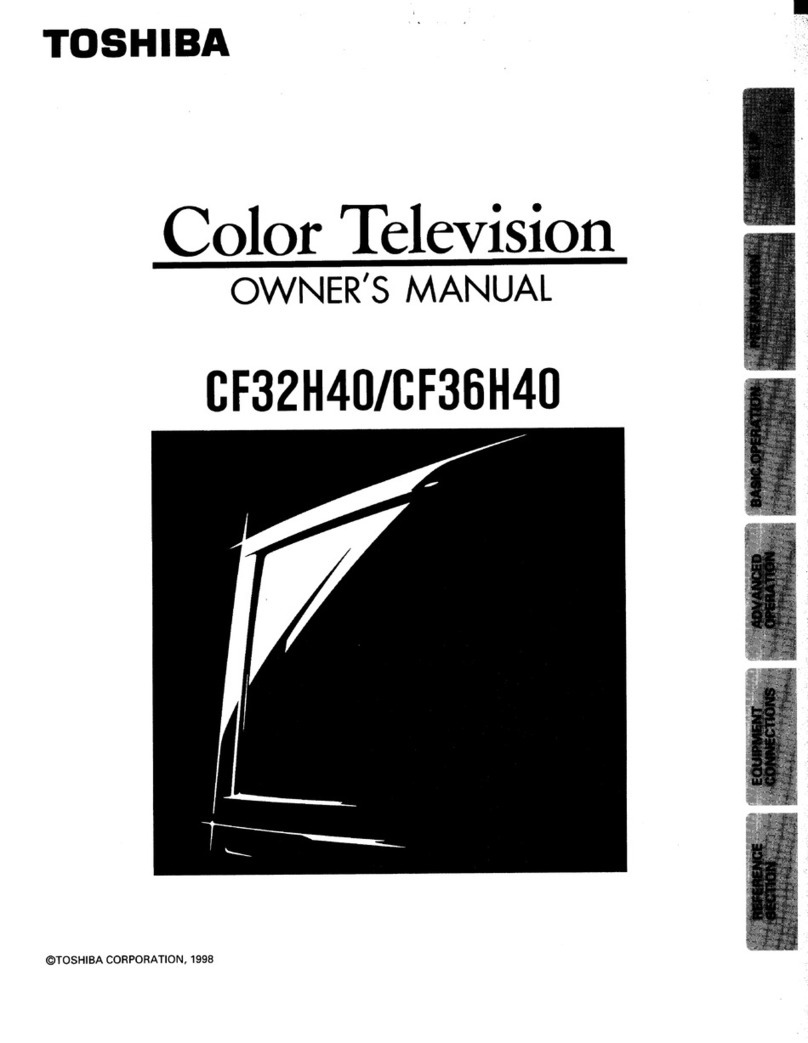
Toshiba
Toshiba CF32H40 User manual
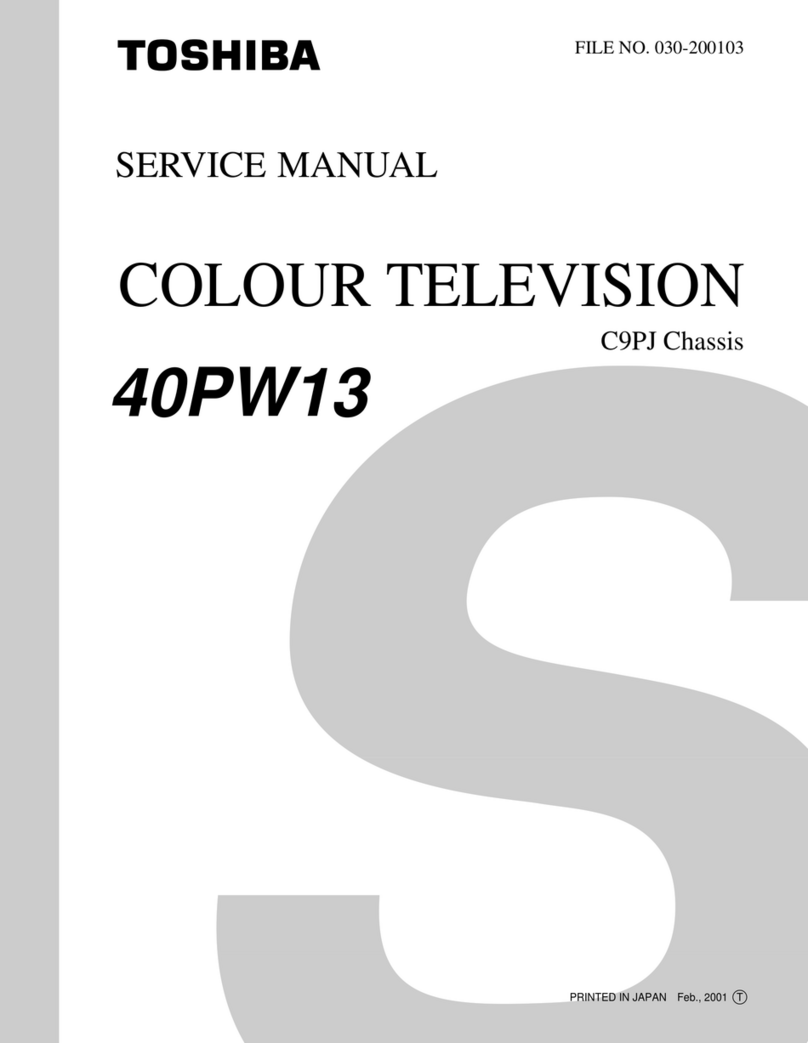
Toshiba
Toshiba 40PW13 User manual
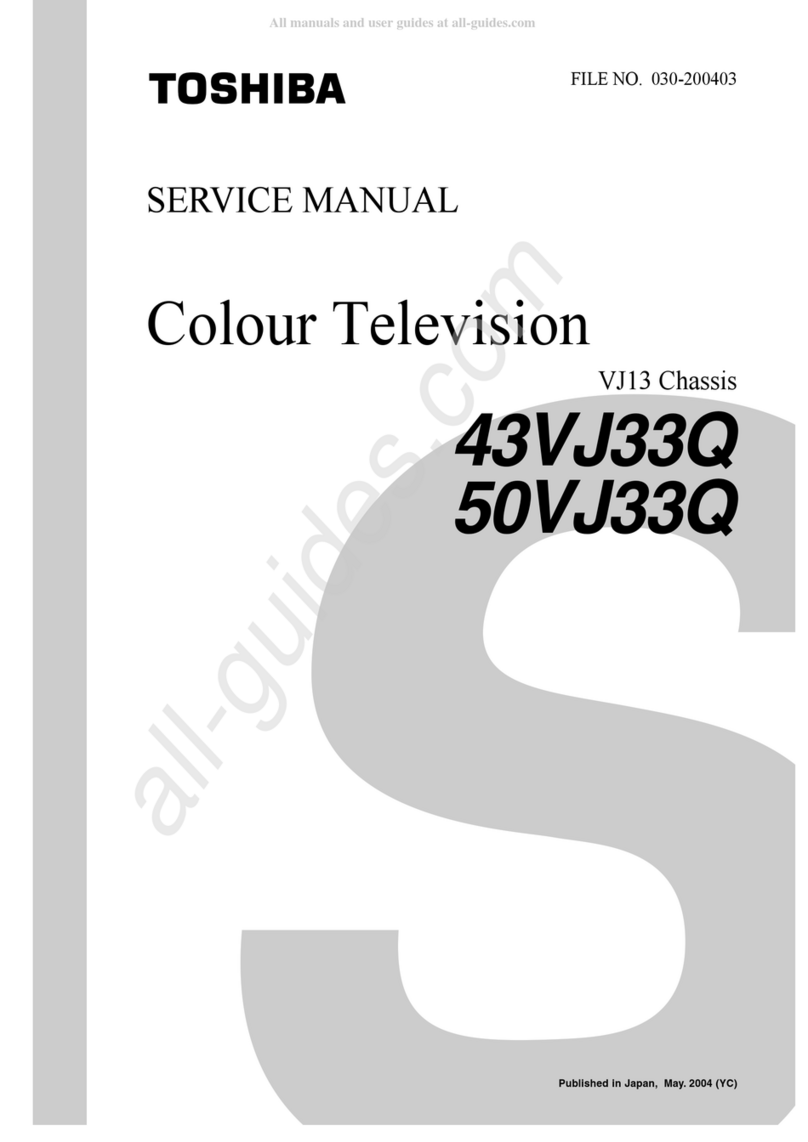
Toshiba
Toshiba 43VJ33Q User manual

Toshiba
Toshiba 29CJZ6DR User manual
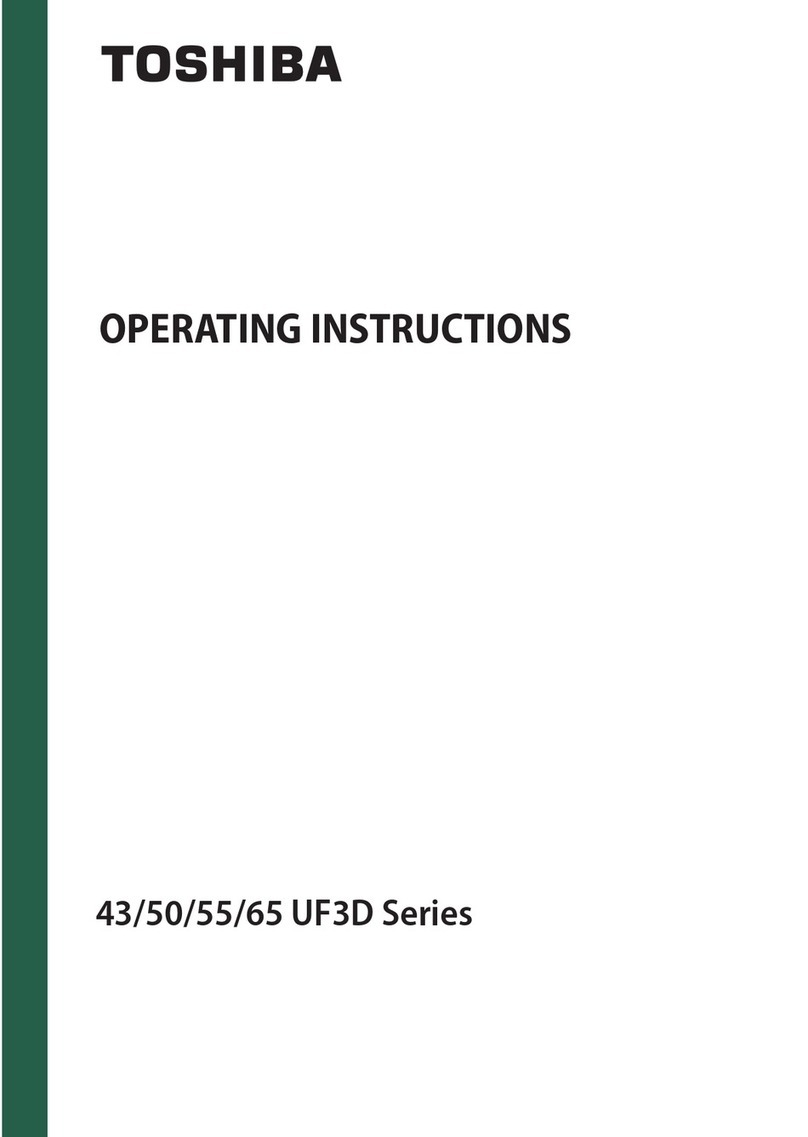
Toshiba
Toshiba 43 UF3D Series User manual

Toshiba
Toshiba 39L3753DB User manual

Toshiba
Toshiba 15V11F User manual

Toshiba
Toshiba CX36H64 User manual
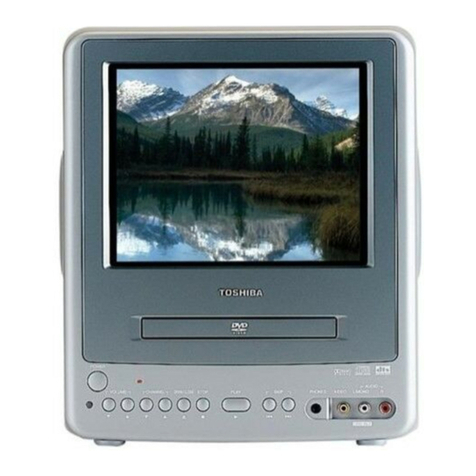
Toshiba
Toshiba MD9DN1R User manual
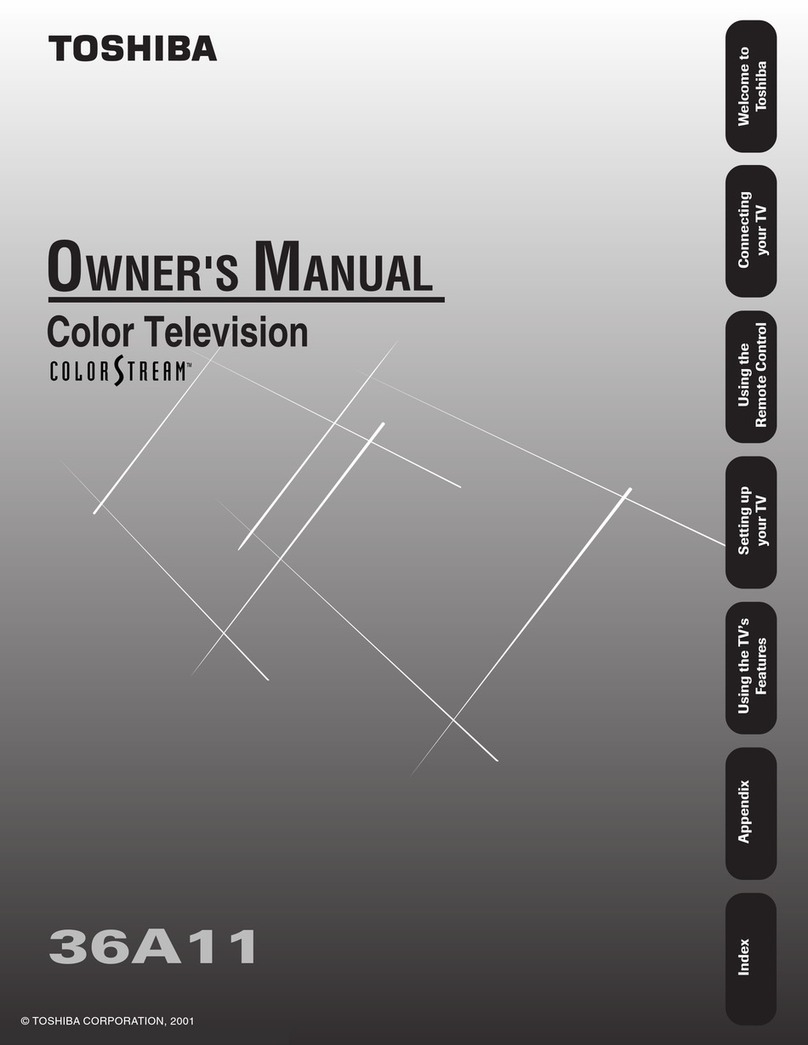
Toshiba
Toshiba 36A11 User manual

Toshiba
Toshiba MD24F52 User manual
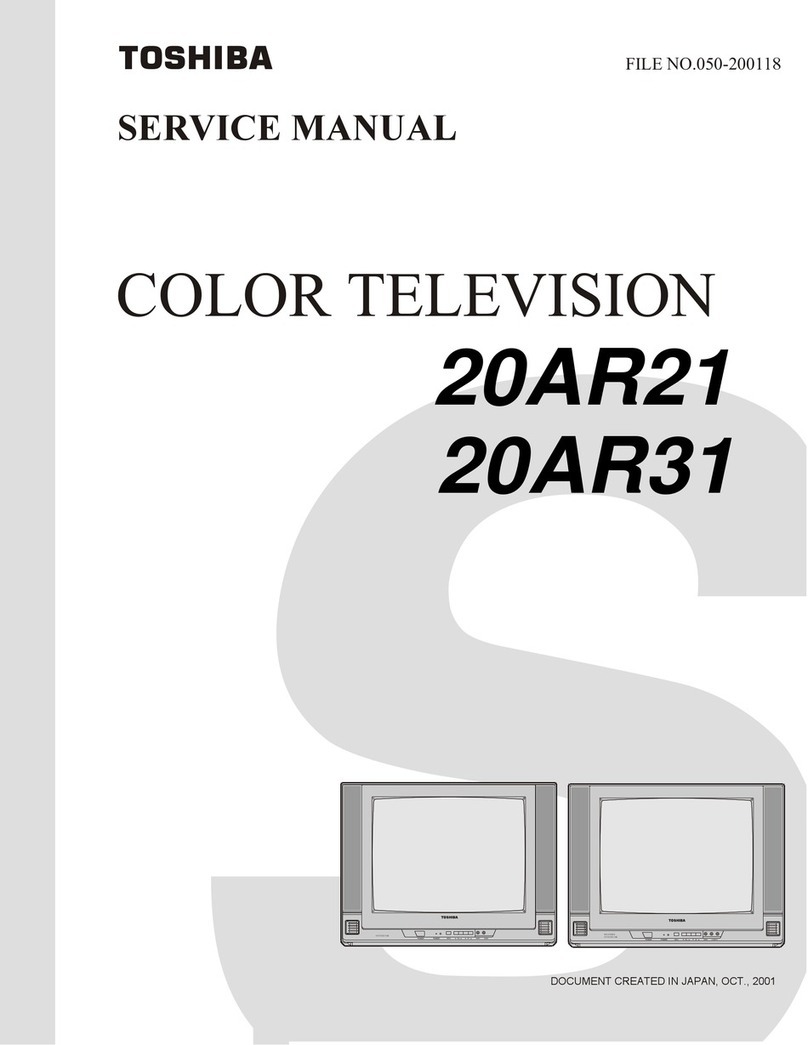
Toshiba
Toshiba 20AR21 User manual
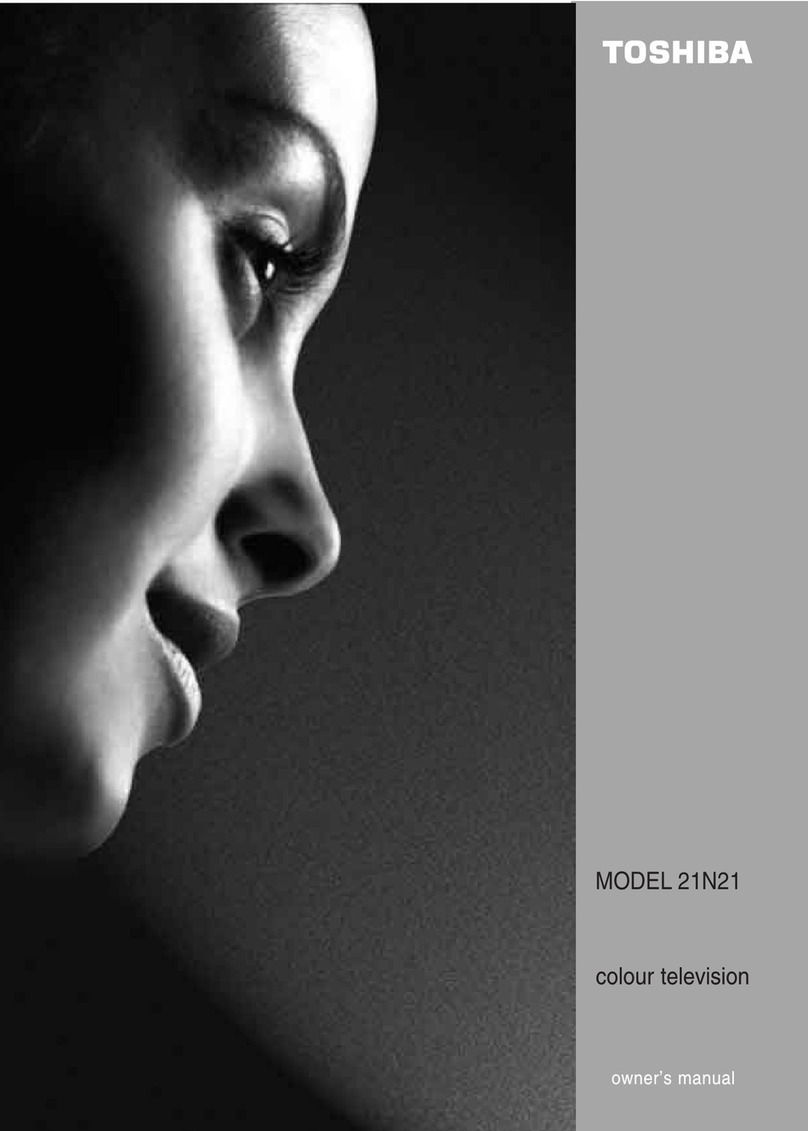
Toshiba
Toshiba 21N21 User manual
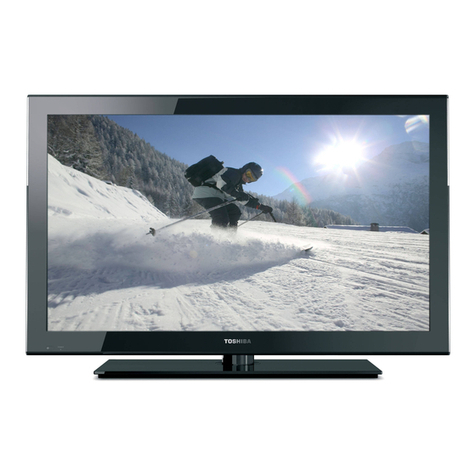
Toshiba
Toshiba 24SL415U User manual

Toshiba
Toshiba 40WH08G User manual
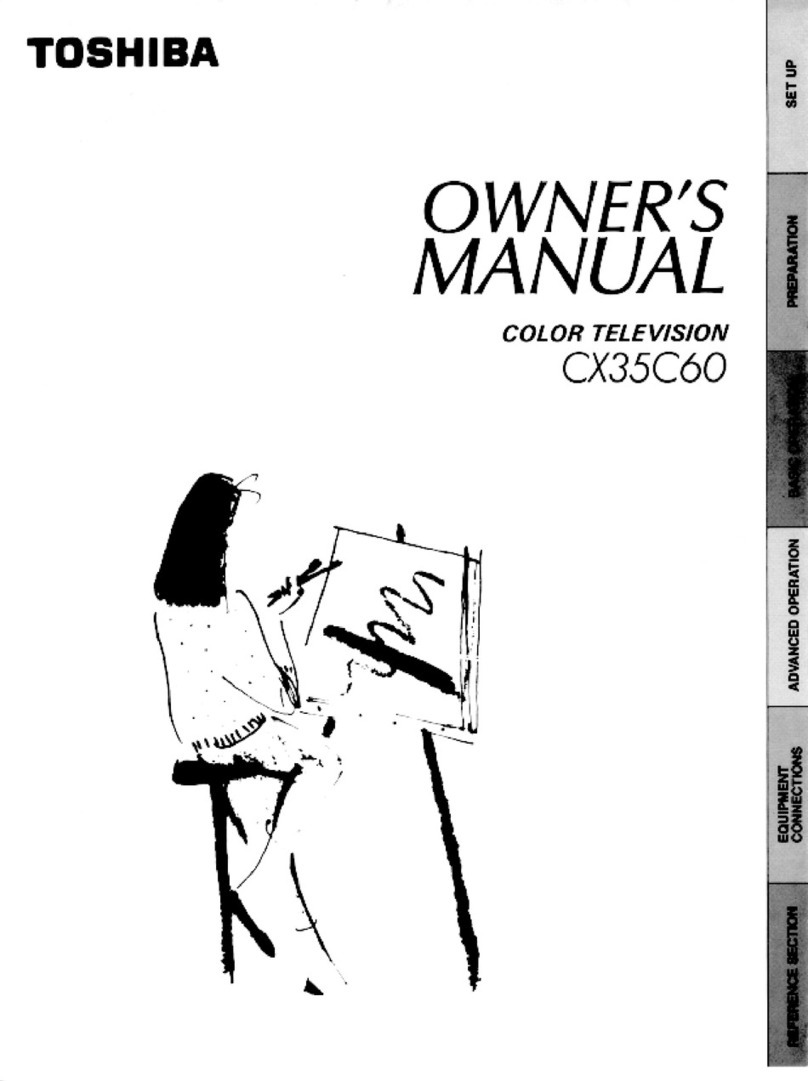
Toshiba
Toshiba CX35C60 User manual
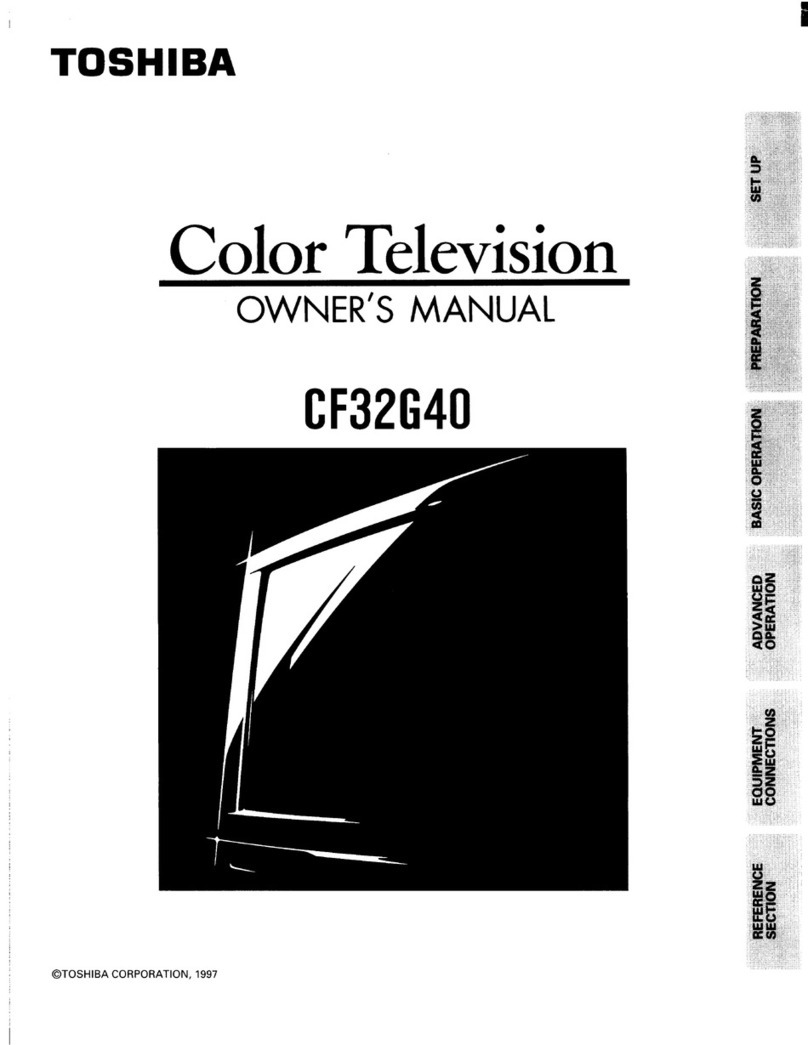
Toshiba
Toshiba CF32G40 User manual

